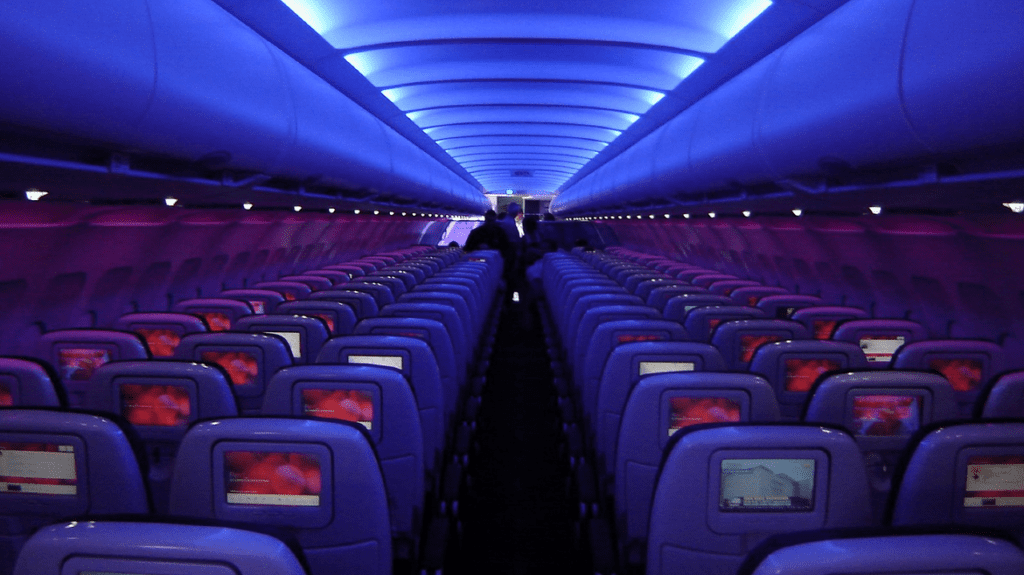If you’ve ever been on a plane, you’ve experienced this. As the plane takes off or lands, they dim the lights. But you may have also noticed that sometimes they don’t. And on some flights, they ask you to close your window shade during take-off and landing, whereas sometimes they ask you to open it. Or they ask YOU to keep YOUR window shade closed (or open), but ask someone in another row to keep theirs open (or closed).
What’s up with all that?
In doing some research, it initially appeared that the main reason for making the plane darker by dimming the lights and closing the windows was so our eyes get accustomed to the darkness.
Have you ever noticed that if you’ve been outdoors on a sunny day and then go into a building that’s relatively dark inside, it takes some time for your eyes to adjust? It’s the same thing, and the flight crew wants to make sure your eyes adjust.
Flying is, of course, usually very safe. But emergencies do happen sometimes. And, not to be maudlin, most commercial airplane accidents occur during take-off or landing. So the flight crew wants your eyes to adjust to the darkness so if you have to evacuate, you won’t have to worry about not seeing in the dark as well and as quickly as you otherwise could.
That makes sense for night flights. But what if it’s daytime?
Good point. And one that led me to the ultimate authority.
Tereen is a U.S.-based flight attendant I know, and she gave me the low-down, including the things that we, as mere passengers, might never even think about. Here’s what she had to say:
Cabin lighting
“One is the issue of light exposure for the eyes of the passengers. In the event of an evacuation, you want the passengers to be able to see when they exit the airplane, therefore the lighting inside the cabin is set to approximate the light conditions outside the aircraft, so the eyes do not waste valuable time adjusting. But, the passengers also need to find their way to an exit in a smokey cabin. So generally, the cabin lighting is dim, but not off.
“Compounding this, is the fact that some aircraft have aisle path lighting that is electrical and lights up from the aircraft power, but some (such as Airbuses) have aisle path lighting that is made up of glow-in-the-dark strips that need to be charged by the overhead cabin lighting, for 15 or 20 minutes. So the cabin lighting is left on to keep those charged.”
Another factor that might influence whether cabin lighting is kept on, off or dimmed is the electrical load needed for the plane. When certain types of planes take off, you want to have access to as much power as possible to shorten the take-off roll (take off roll: “The process whereby an aircraft is aligned with the runway centerline and the aircraft is moving forward with the intent to take off“) and the more things using up electricity at the moment (such as cabin lights), the less power is readily available to the engines. The same is true when landing, except when you want to conserve the power in reserve in case the flight crew needs to abort the landing quickly. If that were the case, they wouldn’t want to waste precious time playing around with electrical switches.
Window shades open or closed
From Tereen: “The next issue is which are primary exits on the aircraft. Exits are designated as primary and secondary, with doors usually being primary and windows or hatches usually being secondary (an example of a plane with primary door exits and secondary window/hatch exits are A319s. A321s, on the other hand, only have door type exits, which are all primary). Before any exit is opened, the outside conditions must be assessed to determine the presence of fire, tree branches, electrical lines, water or any other undesirable obstruction. Around primary exits, there must be good visibility. Around secondary exits, it is not as critical. This influences the issue of window shades being open or not. Ideally, one would have the shades open on the window exit hatches and the adjacent rows’ windows for maximum visibility. Part of this is at the discretion of the flight attendant responsible for the window exit – the same flight attendant screens the passengers seated there and briefs them on the exit. If they know the airport is a tricky one, or the weather is a bit wild, or it is night time versus day time (all of these influence their decision), they might request that the window shades in the adjacent rows be open for landing. Under other circumstances, they may not.”
Tereen suggests that, if not specifically asked to have the window shades left one way or the other, it’s always in your best interest to have them open. That way, you can see the hazards outside the aircraft for your evacuation in an emergency.
In conclusion
So there’s no “one size fits all” answer. It all depends on the type of aircraft and time of day that determines what happens with the cabin lighting during take-off and landing. Add to that the type of exits, landing conditions, personal preference of the flight attendant, and possibly where you’re seated as to whether or not you’re asked for the window shades to be open.
Oh, and if it’s an international flight? ALL bets are off. The rules for lights on/off and window shades open/closed could be completely different – it varies by country.
*** Many thanks to Tereen for her help with this post!
Feature Photo: current events / Wikimedia
Want to comment on this post? Great! Read this first to help ensure it gets approved.
Want to sponsor a post, write something for Your Mileage May Vary, or put ads on our site? Click here for more info.
Like this post? Please share it! We have plenty more just like it and would love it if you decided to hang around and sign up to get emailed notifications of when we post.
Whether you’ve read our articles before or this is the first time you’re stopping by, we’re really glad you’re here and hope you come back to visit again!
This post first appeared on Your Mileage May Vary
Join our mailing list to receive the latest news and updates from our team.

